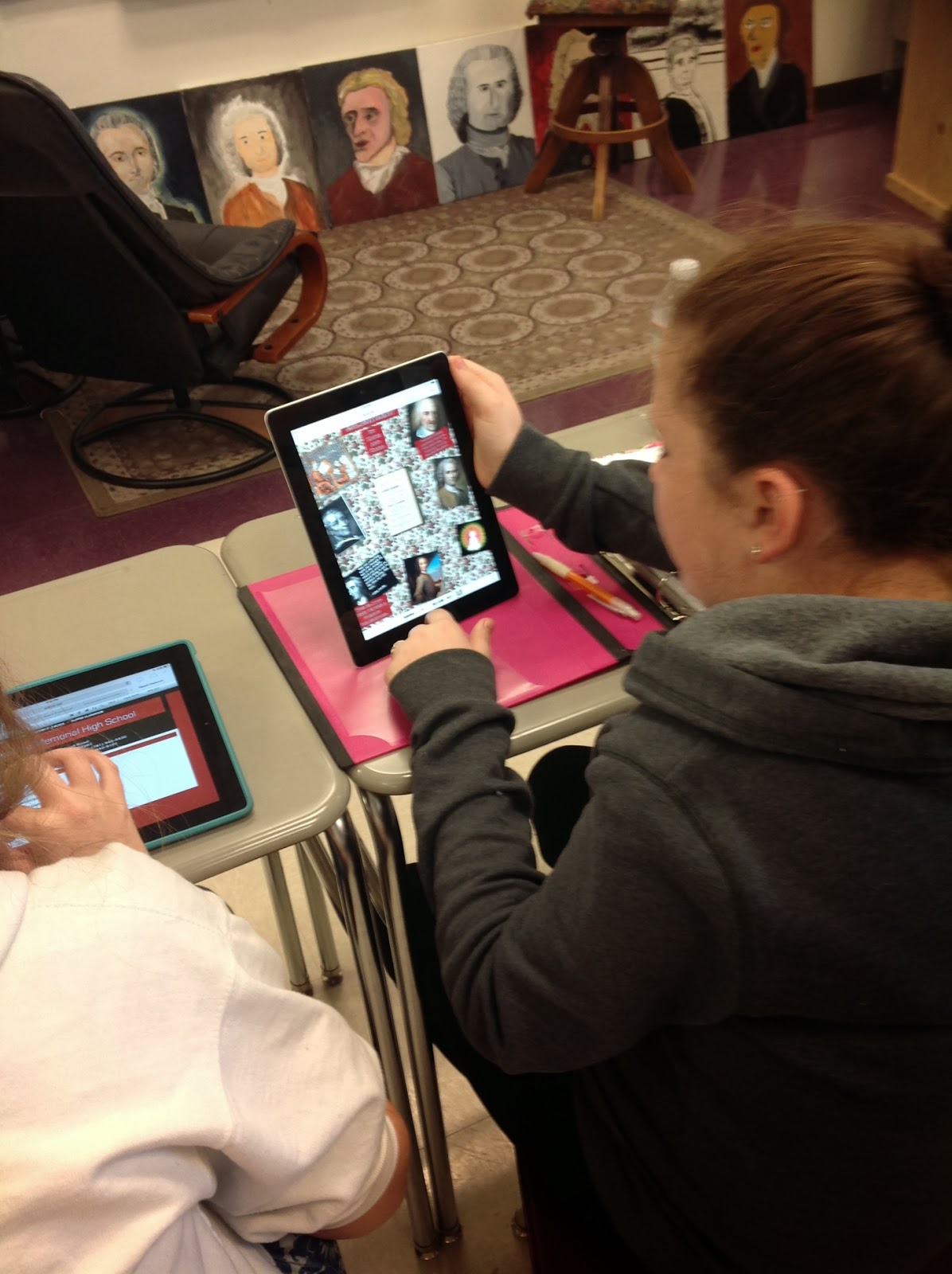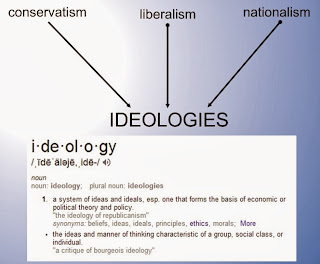I had the opportunity to observe a colleague,
Gary d'Entremont, recently. He has done a complete 180. Literally, he has flipped his classroom for the entire unit on the Enlightenment in our school's History 9 curriculum. I actually had some of his current students in my 8th grade classroom last year. It was rewarding to see them working at a higher level, and I experienced my own enlightenment when it came to the flipped classroom model thanks to this experience.
Here's how Gary does it.
1.
Preparation
Gary set up his class website (our district uses Edline) so that all materials students will need for the 2 week unit were there before they began. Explanations on what a
flipped classroom is, what
student responsibilities are, and how to carry out each of the tasks are clearly labeled and easy to read.
2.
Formatting
The text documents are posted in .pdf format. This makes it easy for students to view them without awkward formatting problems, which can occur with Word Documents for example, on laptops, tablets, or smartphones of any kind. Also, for student assignments Gary has clear directions and has modeled the product so students can see what is expected. There are some samples of these modeled products below. Finally, since some students have Macs and others have PCs at home, the videos that students watch at home as part of the flip are posted in both Windows and QuickTime formats.
 |
| Sensory Image |
 |
| Primary Source Analysis & Citation |
3.
Consistency
Gary recommends that students watch two videos a night and take
Cornell notes. They use those Cornell notes to reflect individually at the beginning of class and then pose questions to classmates for clarification. This way, students are held accountable for doing their work on the flipside (at home) by their classmates during the discussion. Gary also does a nice job complementing his students who pose and answer questions during the large groups discussion so they are getting positive feedback for participating.
 |
| Student reflects on the left side of his Cornell notes at the beginning of class. |
Here are a few examples of questions and answers from the class discussion that followed the individual student reflection time:
- Q: What did they mean when they said the Enlightenment helped form democracy? (A: Freedom of speech, pursuit of happiness from John Locke)
- Q: Why was the Edict of Nantes taken back? (A: King of France was a Catholic and didn't like Protestants, Louis XIV, Sun King)
- Q: Why was descrimination ok before the Enlightenment? (A: Because it was habit, it was just what everyone did)
- Q: What time frame were the philosophes reacting to (A: late 16th early 17th century)
4. Engagement
Once the class discussion time was over, students spent the remaining 40 minutes of class time working individually or together on the work portion of the flipped classroom model. Plenty of apps were being utilized: Educreations, Evernote, Safari, Spreaker, and PicCollage to name a few. Students were working together, posing questions to Gary and to their peers, and creating multimedia products based on Enlightenment philosophy.
 |
| Students researching. chatting, and creating together using BYOD and classroom iPads. |
 |
| This student is working on a Sensory Image. |
 |
| This student is finishing up a collage. She will screenshot, crop, and send it to Gary via email. |
I was grateful to have the opportunity to observe a colleague so fully committed to the flipped classroom model in action with his students. As you can tell from this detailed post, he willingly shared everything he created to make the lesson possible and answered the many questioned I peppered him with. He students were happy to explain what they were working on and how it demonstrated what they had learned. Thanks to this short observation experience, I plan to use portions and parts of Gary's lesson in my own Enlightenment unit with my History 9 classes in a week or two. I have been a bit of a critic of the flipped model, but Gary's careful preparation, formatting, consistency and engagement may have made me into a believer. Now I have to get to work doing my own 180!










Comments
Post a Comment